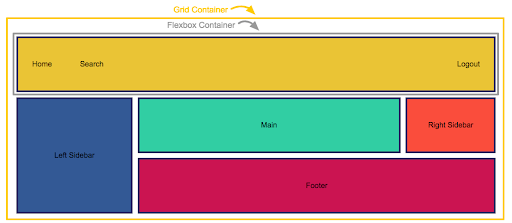

So I created a CSS course to help you avoid the same mistake. I was learning about advanced JavaScript topics when I couldn't even implement basic layouts in CSS. I believe it's the highest-ROI skill you can master.īefore I mastered CSS, I lost a ton of time & energy fiddling around with CSS. Enable flex behaviors Apply display utilities to create a flexbox container and transform direct children elements into flex items. For more complex implementations, custom CSS may be necessary.
#Flexbox responsive columns full#
We need to use align-content now if we want to horizontally center everything in the container ( align-content instead of align-items because we have multiple columns here).īy the way, I think CSS is the 'bottleneck' to most websites & web apps. Flex Quickly manage the layout, alignment, and sizing of grid columns, navigation, components, and more with a full suite of responsive flexbox utilities. When learning CSS and making responsive column layouts, I was taught the flexbox method (but also the fact that you should avoid using it too much). Note that justify-content will behave differently now that we changed the flex-direction to column. Flex-items will flow vertically and if the next flex-item doesn't fit in the column it will wrap onto a new column. Here, we flip the direction to 'column' (vertical). The flex property then determines what proportion each child element should get from that available space.ģ) A parent element and more than 3 child elements, like 5 or 10 or 41 (not a multiple of 3):Ĥ) A 'masonry' type of layout (a parent element with more than 3 child elements, no matter if a multiple of 3) So the child elements all get at least 500px of width and then there is still some space left in the container (the 'available space'). The flex-basis property acts as a minimum size. The flex property is about the width here, because the flex-direction here is 'row' (horizontal - the default).Ģ) A parent element and more than 3 child elements, like 6 or 9 or 12 (multiple of 3):

Since all child elements have the same class of 'child', they all get flex: 1, so they should all take up the same proportion of the available space (they'll be the same width).
You could use flex-sm-row to keep the row horizontal on sm and up, then flex-column to stack vertically on xs screen widths. Note that with flex we specify the relative proportion each child element should get from the available space. Really Responsive Tables using CSS Flexbox (complex) - index.html. 26 The flex-row and flex-column classes can also be used responsively. (examples don't contain irrelevant things for this topic like creating space between elements)ġ) A parent element with 3 child elements, like: You're probably looking for one of the following three-column layouts with Flexbox: If you haven't mastered both of them yet, I highly recommend going through my CSS Course. You need to master both Flexbox and CSS Grid in order to professionally build modern websites & web apps.


 0 kommentar(er)
0 kommentar(er)
